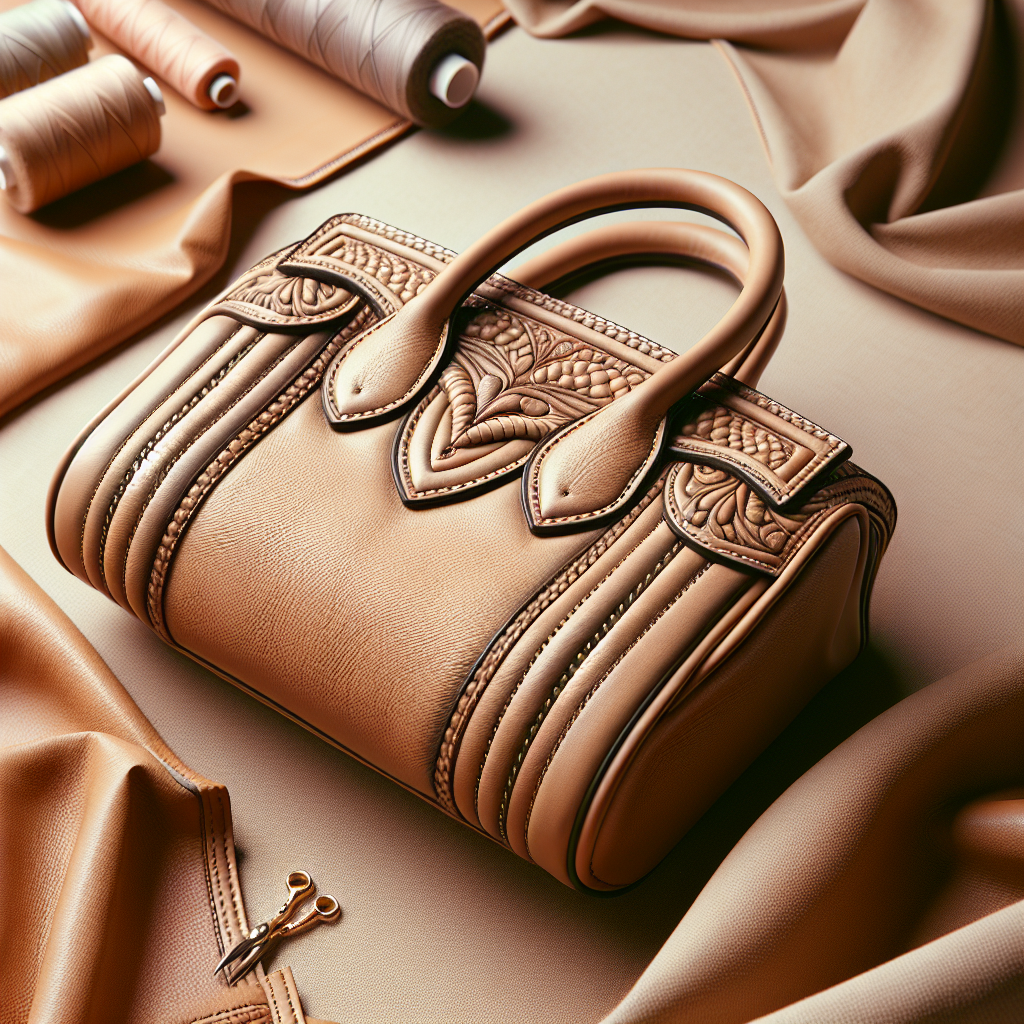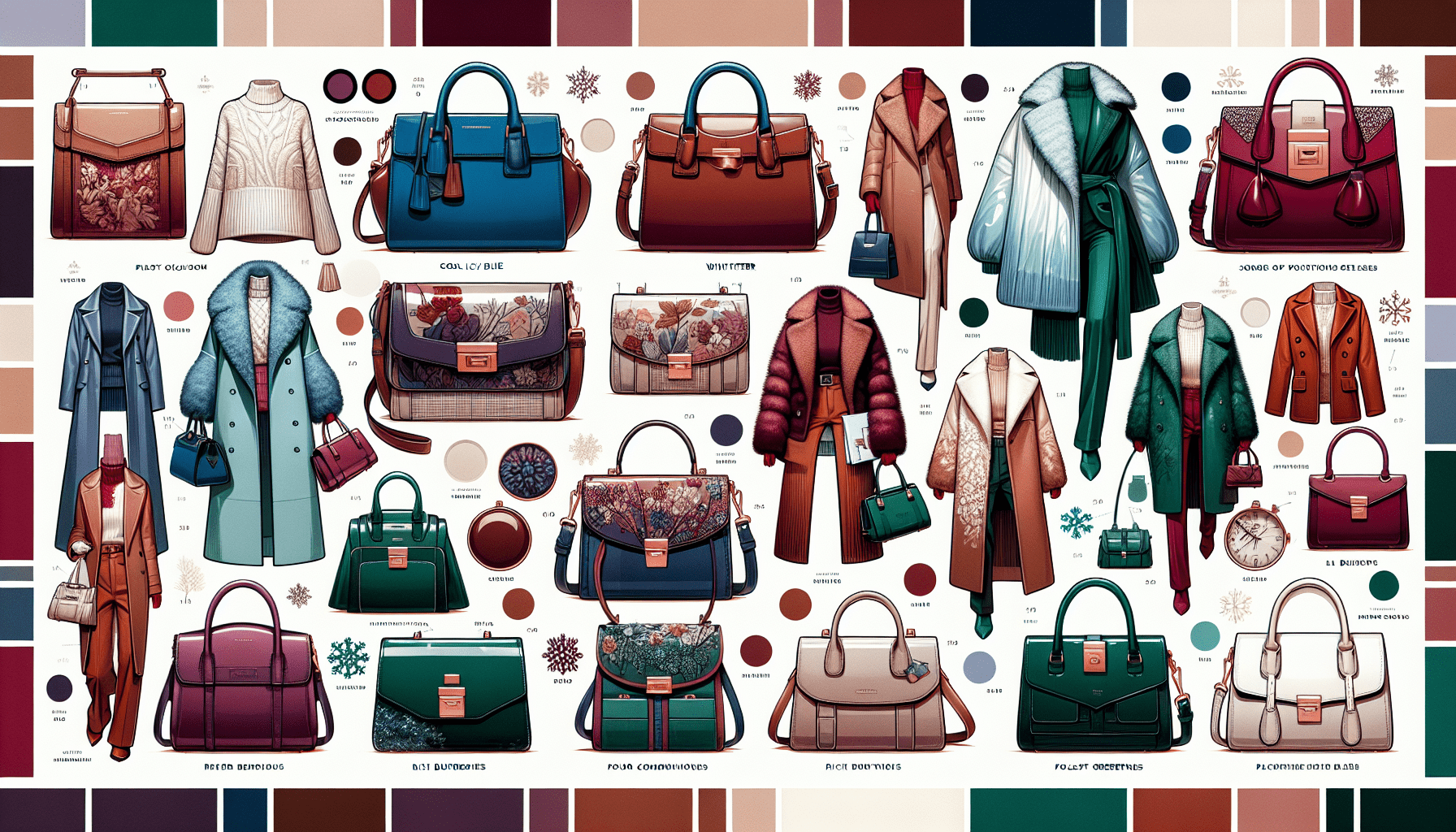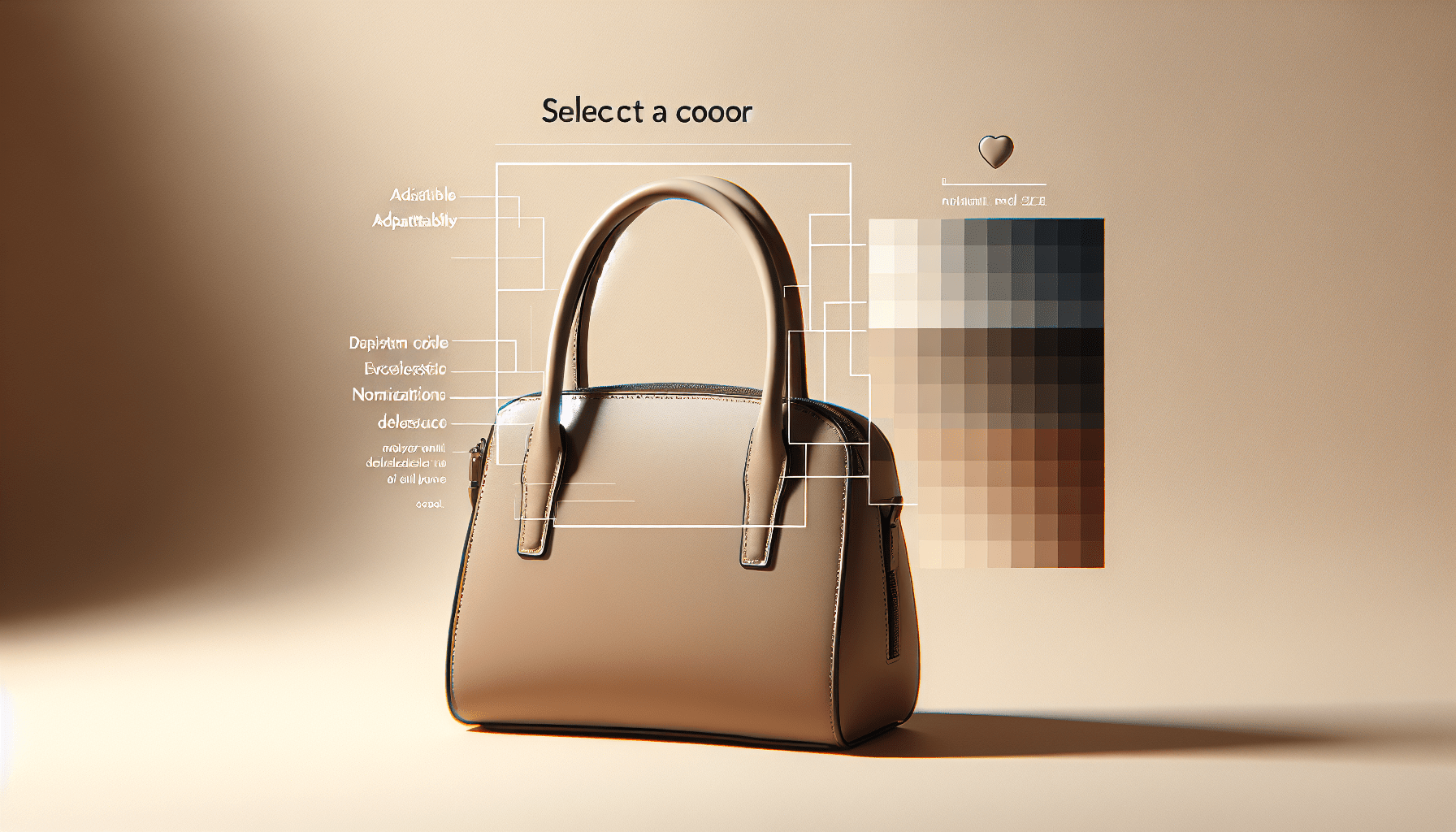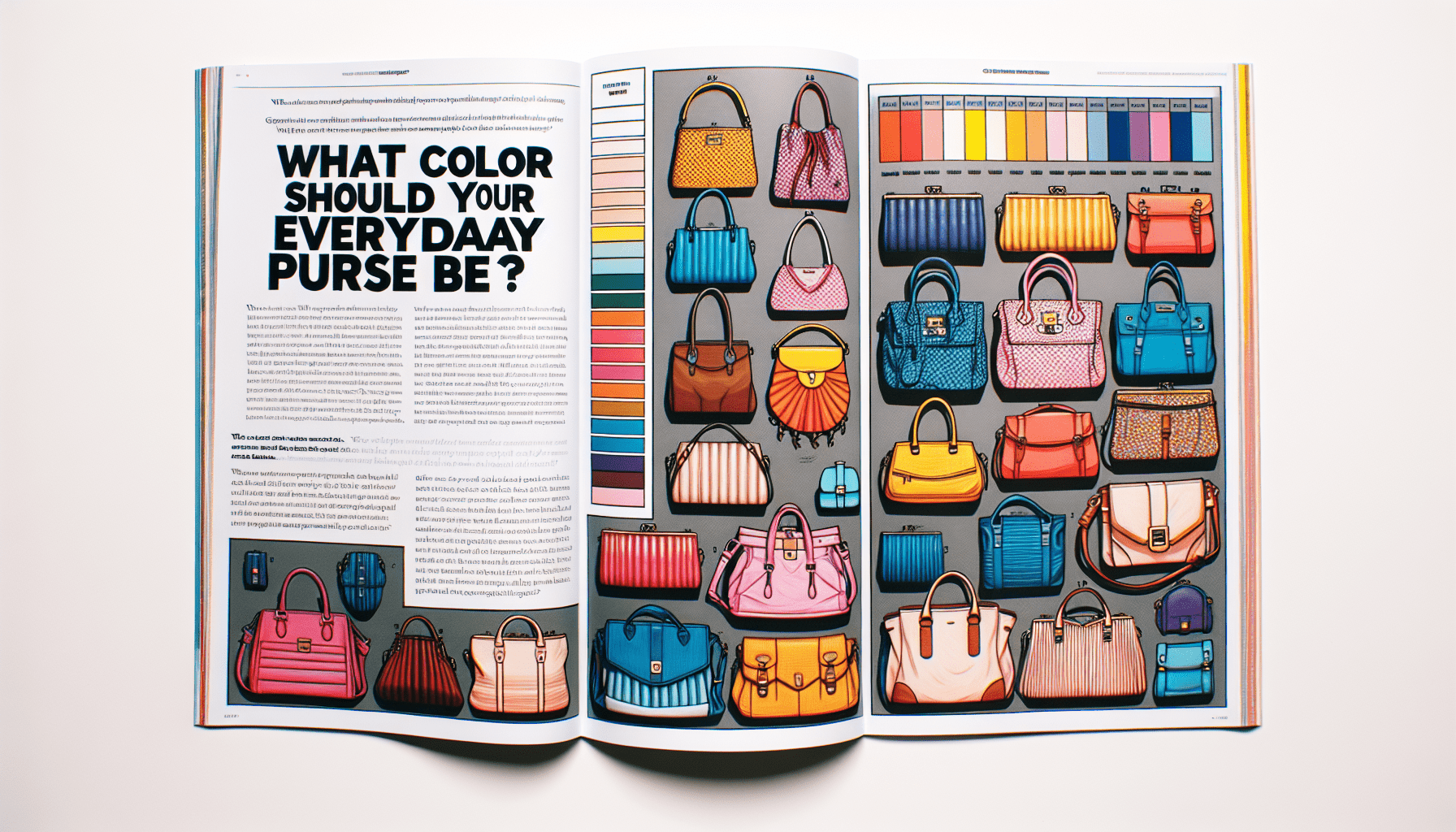What Factors Determine The Price Of A Handbag
Have you ever wondered why some handbags cost a small fortune, while others are more affordable? In order to understand the price tags attached to these coveted accessories, it is important to consider the various factors that determine their value. From the brand reputation and craftsmanship to the materials used and the level of exclusivity, each element plays a crucial role in determining the price of a handbag. So, whether you’re a fashion enthusiast or simply curious, let’s explore the key factors that contribute to the price of these stylish companions.
Brand and Reputation
Influence of brand recognition on price
When it comes to handbags, brand recognition plays a significant role in determining the price. A well-established and renowned brand often commands a higher price due to its reputation for quality, design, and exclusivity. The brand name alone can add value and influence the perceived worth of a handbag. Consumers are willing to pay a premium for a handbag from a brand they trust and admire.
Impact of designer reputation
The reputation of the designer behind a handbag also impacts its price. A handbag designed by a well-known and highly regarded designer carries prestige and craftsmanship that can elevate its value. Designers with years of experience and a successful track record often have higher price points for their creations. The designer’s name becomes synonymous with luxury and prestige, making the handbag more desirable and thus driving up its price.
Value of brand loyalty
Brand loyalty is a crucial factor in determining the price of a handbag. Consumers who have a strong attachment to a particular brand are more likely to invest in their products, even if they come with a higher price tag. Brands with a loyal customer base can charge a premium due to the trust and emotional connection their customers have with the brand. The perception of exceptional quality, customer service, and overall brand experience adds value to a handbag and justifies the higher price.
Quality and Craftsmanship
Role of materials used
The choice of materials used in the construction of a handbag influences its price. High-quality materials such as genuine leather, exotic skins, and luxury fabrics are more expensive to source, thus driving up the production cost and subsequently the retail price. The use of premium materials not only enhances the durability and longevity of the handbag but also adds a touch of luxury and exclusivity, which justifies the higher price.
Impact of craftsmanship details
Handbags that showcase superior craftsmanship and attention to detail often come with a higher price tag. The intricate stitching, precision-cut patterns, and hand-finished details all contribute to the overall quality and aesthetic appeal of the handbag. Skilled artisans invest time and expertise in creating a meticulously crafted bag, which adds value and justifies the higher price.
Quality checks and assurance processes
Handbags that go through rigorous quality checks and assurance processes before reaching the market are likely to have a higher price. Brands that prioritize quality and invest in thorough testing and inspection procedures ensure that only flawless products make it to the customers. These additional steps in the manufacturing process incur costs that are ultimately reflected in the price of the handbag.
Design and Aesthetics
Contribution of innovative designs
Innovative and unique designs can significantly impact the price of a handbag. Brands that constantly push the boundaries of design and introduce fresh and exciting styles can command higher prices. The avant-garde approach to design sets these handbags apart from the rest, making them highly sought after by fashion-forward consumers who are willing to pay a premium for something that stands out from the crowd.
Influence of aesthetic appeal
The aesthetic appeal of a handbag plays a vital role in determining its price. Handbags that possess timeless elegance, flawless proportions, and visually pleasing elements are more likely to have a higher price point. Consumers are willing to invest in a handbag that not only serves a functional purpose but also elevates their personal style and makes a fashion statement.
Trends and market dynamics impacting design
Trends and market dynamics can also influence the design and price of handbags. Fashion trends and consumer preferences shift over time, and brands must adapt their designs to meet these demands. Handbags that align with popular trends or cater to the needs of a specific market segment may have a higher price due to their relevance and desirability in the current market.
Supply Chain Costs
Cost of raw materials
The cost of raw materials is a significant factor in determining the price of a handbag. The sourcing and procurement of high-quality materials can be expensive, especially if they are rare or require special treatment. Costs associated with obtaining premium materials, such as leather or exotic skins, are passed onto the consumer, contributing to the overall price of the handbag.
Import and export duty costs
Import and export duty costs also impact the price of a handbag. Handbags that are manufactured in one country and exported to another often incur additional fees and taxes. These costs are factored into the final retail price, making the handbag more expensive in certain regions or countries.
Production and manufacturing costs
The production and manufacturing costs play a significant role in determining the price of a handbag. Costs associated with labor, machinery, overhead expenses, and quality control measures all contribute to the overall production cost. Highly skilled artisans, sophisticated machinery, and stringent quality standards can drive up these costs, which are then reflected in the retail price.
Distribution and transportation charges
Distribution and transportation charges are also factored into the price of a handbag. Retailers incur costs associated with storing, handling, and shipping the handbags to their stores or customers. These costs, along with the desired profit margin, are added to the production cost, ultimately influencing the final retail price.
Retail Markup
Retailer’s margin
Retailers add a margin to the price of a handbag to cover their expenses and generate profit. This margin accounts for the costs associated with running a store or online platform, including rent, staff wages, utilities, and marketing expenses. The retailer’s margin varies depending on their business model, target market, and desired profit margin, contributing to the final price the consumer pays.
Selective distribution and exclusivity contracts
Selective distribution and exclusivity contracts can influence the price of a handbag. Brands that limit the number of retailers authorized to sell their products can create a sense of exclusivity and scarcity, which can drive up the price. Retailers who have exclusivity contracts with certain brands may have more control over pricing, as they are the sole distributors of those particular handbags.
Online vs offline retail pricing
The pricing of handbags can also differ between online and offline retail channels. Online retailers often have lower overhead costs compared to brick-and-mortar stores, which may allow them to offer handbags at a slightly lower price. Offline retailers, on the other hand, provide a tangible shopping experience and personalized customer service, factors that may justify a higher price compared to their online counterparts.
Marketing and Promotion
Cost of advertising and marketing campaigns
Brands allocate a significant portion of their budget to advertising and marketing campaigns, which can impact the price of a handbag. Costs associated with advertising in traditional media, digital marketing, celebrity endorsement, and social media influencers are factored into the overall price. The more extensive and high-profile the marketing campaign, the higher the price of the handbag may be to cover these expenses.
Price impact of celebrity endorsement and collaborations
Handbags endorsed by celebrities or created through collaborations often come with a higher price tag. The association with a well-known personality or a collaboration with a brand or designer can increase the perceived value and desirability of the handbag. This, in turn, allows the brand to set a higher price for the limited edition or celebrity-endorsed models.
Effect of seasonal sales and discounts
Seasonal sales and discounts also impact the price of handbags. During certain periods, brands may offer discounts or promotional offers to incentivize customers to make a purchase. These temporary price reductions may enable customers to acquire a handbag at a lower price than its original retail value. However, the regular price is often determined by considering the potential discounts and seasonal factors.
Limited Edition Models
Scarcity and exclusivity factor
Limited edition handbags are often priced higher due to their scarcity and exclusivity. Brands produce a limited number of these handbags, creating a sense of exclusivity and desirability among consumers. The limited availability and the belief that these handbags are rare and highly sought after contribute to their higher price tags.
Celebrity association with limited editions
Limited edition handbags associated with celebrities tend to command a higher price. The combination of an exclusive design, a limited production run, and a celebrity endorsement creates a potent marketing strategy that attracts fervent interest from fans and collectors. The association with a well-known personality adds value and justifies the premium price.
Price determination in auction and resale markets
The demand and value of handbags can be determined through auction prices and the resale market. Certain handbags, particularly those from luxury brands or limited edition collections, may appreciate in value over time. The scarcity, condition, and desirability of specific handbags among collectors and enthusiasts can influence the price they fetch in the auction or resale market.
Geographical Location and Market
Location-based price discrimination
Geographical location can play a role in price discrimination for handbags. Brands may adjust their pricing strategy based on the purchasing power and demand in different regions or markets. Handbags may be priced differently in premium shopping destinations or regions with higher incomes compared to markets with lower purchasing power.
Currency exchange rates
Currency exchange rates can impact the price of handbags. Brands that operate globally or source their materials from international suppliers often face fluctuations in currency exchange rates. These fluctuations can affect the cost of production, import/export duties, and overall expenses, which then influence the retail price of handbags in different markets.
Market demand and purchasing power
Market demand and purchasing power have a direct impact on the price of handbags. Brands keenly monitor market dynamics and consumer behavior to understand the demand for their products. They adjust their pricing strategy based on the perceived value of their handbags in a particular market and the purchasing power of the target consumers.
Sustainability Factors
Cost of sustainable and ethical production practices
Sustainable and ethical production practices can increase the cost of producing a handbag. Brands that prioritize eco-friendly materials, fair trade, and ethical labor practices often incur higher costs in sourcing and manufacturing. These additional expenses are reflected in the price of the handbag as they contribute to better environmental and social practices.
Premium for eco-friendly and cruelty-free materials
Handbags made from eco-friendly and cruelty-free materials may come with a higher price tag. The use of sustainable materials, such as recycled fabrics or vegan leather alternatives, often requires additional research, development, and production costs. Consumers who value environmentally conscious practices are willing to pay a premium for handbags that align with their ethical values.
Price perception in the sustainable consumer market
The perception of sustainability in the consumer market can impact the price of handbags. Brands that position themselves as sustainable or eco-conscious may have higher price points due to the added value associated with ethical practices. Consumers who prioritize sustainability in their purchasing decisions are often willing to invest in products that align with their values, even if they come at a higher cost.
Research and Development
Investment in design research
Brands that invest in design research often incur additional costs that impact the price of handbags. Researching fashion trends, consumer preferences, and market insights helps brands create innovative and marketable designs. These expenses, including hiring design experts, conducting focus groups, and analyzing data, are factored into the overall cost of producing a handbag.
Cost of prototyping and sample creation
The cost of prototyping and sample creation is another factor that influences the price of handbags. Brands go through an iterative process of creating prototypes and samples to fine-tune the design, functionality, and quality of a handbag. The expenses associated with these prototyping stages, including materials, labor, and adjustments, contribute to the overall production cost and therefore impact the retail price.
Expense of market research and consumer studies
Market research and consumer studies come at a cost and can influence the price of handbags. Brands conduct market research to understand consumer preferences, emerging trends, and market opportunities. The expenses incurred in collecting and analyzing this data are incorporated into the overall budget, including the pricing strategy of the handbags.
With various factors at play, the price of a handbag is determined by a combination of brand and reputation, quality and craftsmanship, design and aesthetics, supply chain costs, retail markup, marketing and promotion strategies, limited edition status, geographical location and market dynamics, sustainability factors, and research and development efforts. Understanding these factors can shed light on why handbags come with diverse price points and help consumers make informed purchasing decisions based on their preferences and budget.




